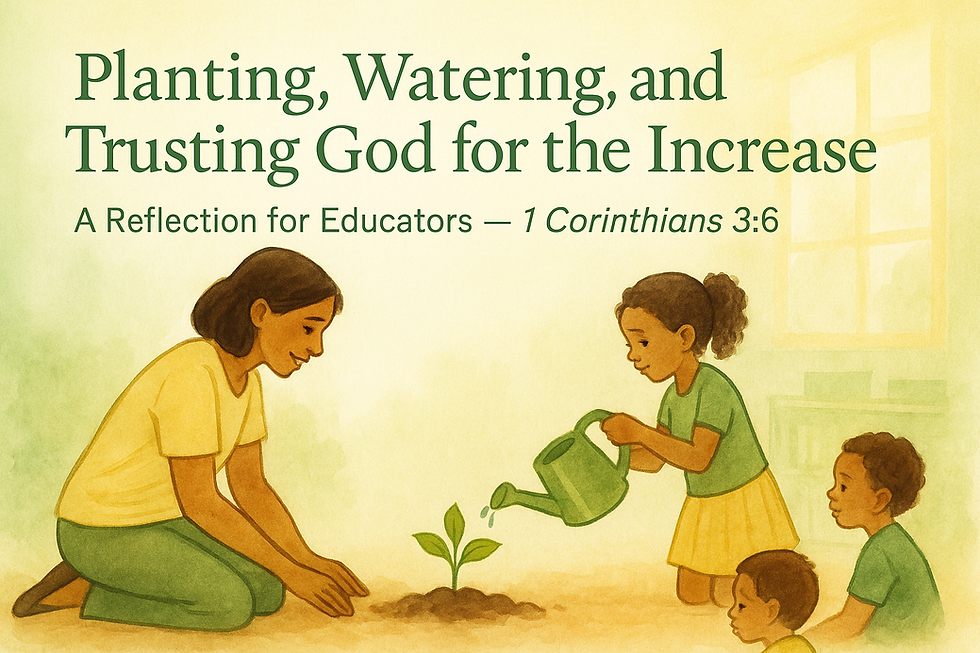Rest as a Learning Standard: Upholding ECC Principles in a Rest-Friendly Classroom with Auntie Nats
- Natasha Francis-Campbell
- Oct 16
- 2 min read

In early childhood settings, rest time is often scheduled but seldom prioritised. Many educators observe that young children struggle to relax, even during quiet time. The reality is that many have already absorbed the culture of busyness, constantly in motion, constantly stimulated, rarely still. Yet both Scripture and science affirm the need for rest. God Himself modelled it at creation. The body craves it. The mind depends on it. Rest is not a lapse in learning but a foundation for it.
As professionals, we must recognise that rest is an essential developmental need, not an optional filler in the timetable. Jamaica’s Early Childhood Commission (ECC) Standards for the Operation and Management of Early Childhood Institutions affirm this truth. Four of these standards speak directly to the value of rest:
Standard 6 – Physical Environment:
Encourages classrooms that are safe, comfortable, and conducive to relaxation and reflection. It reminds us that children need defined spaces to withdraw from stimulation — a quiet corner, a rest mat, or a soft reading nook.
Standard 9 – Health:
Recognises that adequate sleep and rest are crucial for physical well-being. As teachers, we share the responsibility for ensuring that children’s bodies and minds have space to recover and grow.
Standard 7 – Interaction and Relationships with Children:
Emphasises the importance of nurturing, calm relationships. A gentle tone, predictable routine, and affectionate care allow children to feel safe enough to rest.
Standard 8 – Curriculum and Programme of Activities:
Calls for a balanced daily schedule that includes both active and quiet periods, allowing for holistic development across all domains.
Together, these standards make it clear that rest is a professional obligation, part of quality care and education. A classroom that honours rest aligns with both science and spirituality.
Teacher Reflection: Creating a Rest-Friendly Classroom Culture
Physical Space: Create a defined rest area that feels calm and comforting — soft lighting, soothing colours, minimal noise.
Daily Schedule: Protect rest time as sacred. Plan transitions so that the shift from play to rest feels natural and gentle.
Interaction: Speak about rest with warmth. Avoid framing it as a consequence (“It’s rest time because you’re tired of talking”) and instead present it as care (“It’s time for our bodies and minds to refresh”).
Parent Partnership: Encourage parents to mirror restful routines at home. Share tips for winding down after school.
Teacher Well-being: Model balance. When we practise rest, children learn that renewal is not neglect of duty but wise stewardship of energy.
When we honour rest in our institutions, we teach children something far greater than routine compliance — we teach them rhythm. A rhythm that restores rather than drains; that forms rather than fractures. In doing so, we uphold not only the ECC Standards but the Creator’s design for wholeness.
Parents can read the companion reflection on cultivating rest at home, In Praise of Pause, https://www.withauntienats.com/post/in-praise-of-pause-teaching-our-children-the-grace-of-rest-with-auntie-nats,


Comments